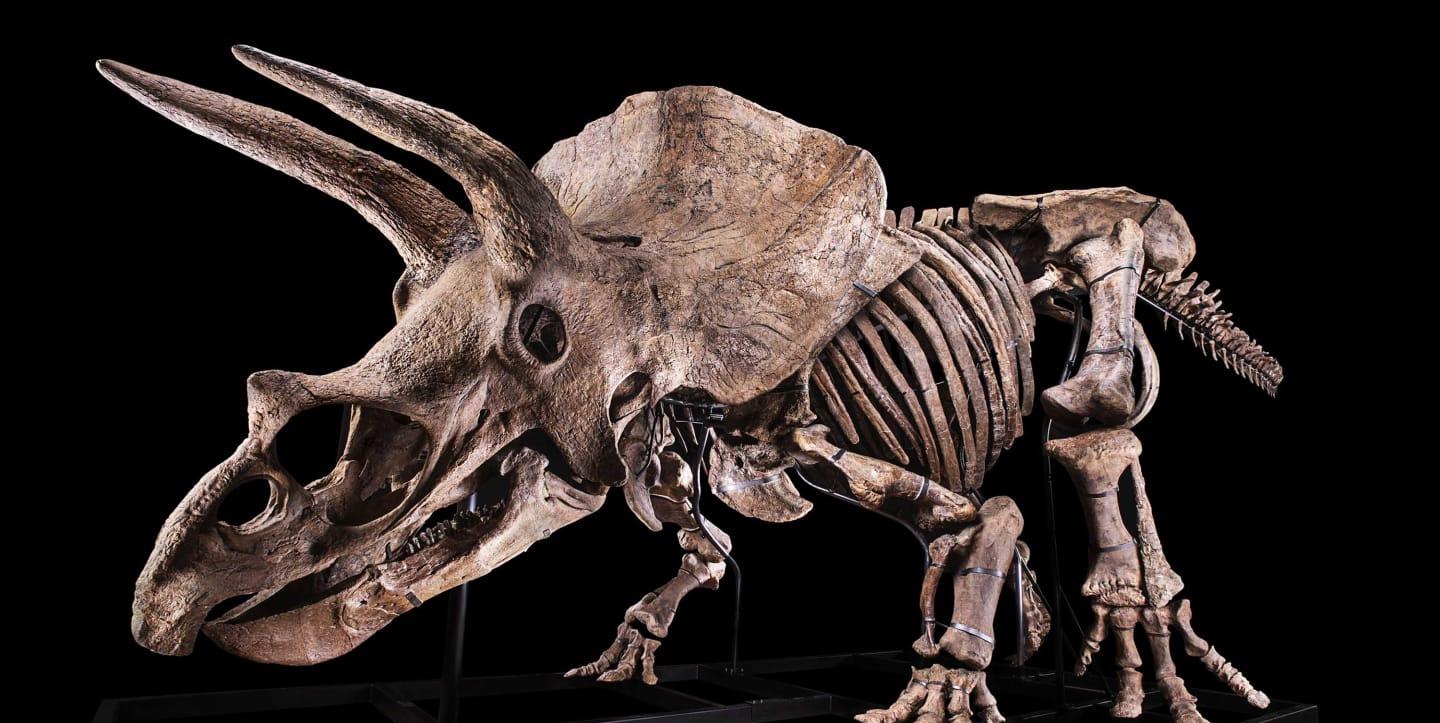The Paper's reporter Wang Yu reported comprehensively
According to CNN, a 66-million-year-old fossil skeleton of a giant Triceratops will be auctioned at the Drouot Auction House in Paris in October.
According to the auction company, the fossil is the largest specimen of Triceratops found in the world to date, with an estimated price of between 1.2 million euros (about 9.2 million yuan) and 1.5 million euros (about 11.5 million yuan).

Giant Triceratops skeleton fossil "Big John" data figure
The giant Triceratops skeleton fossil, named "Big John," is a dinosaur that lived about 66 million years ago (late Cretaceous) in Laramidia, the island continent that stretched from present-day Alaska to Mexico.
In May 2014, geologist Walter M. Walter W. Stein Bill found it in a formation in Hell Creek, an ancient floodplain in South Dakota. According to the Paris Drouo auction house, the dinosaur was excavated a year later and later restored in Italy. From the perspective of the repair condition, the integrity of the skeleton is more than 60%, and the integrity of the skull is 75%.
The most notable features of Triceratops are their horns and neck shields, usually with a horn above the nostrils of the mouth and nose, a pair of frontal horns above the eyes, and a relatively short bony neck shield behind the skull, which is used to protect the neck or attract mates, generally up to more than 1.5 meters long.
Reaching 8 meters in length, John the Great is the largest specimen of Triceratops ever discovered. Infographic
The skull of this "Big John" is 2.62 meters long and 2 meters wide. The two foreheads are 1.1 meters long and have a root diameter of more than 30 centimeters, and are said to be able to withstand a weight of 16 tons. However, judging from the scars on the neck shield, the life of "Big John" was not easy, especially a laceration on the neck, which was suspected to be caused by a conflict with a smaller Triceratops. Auctioneers say it may be to defend territory or courtship.
Triceratops was a herbivorous animal, generally weighing up to 5500 kg and reaching up to 9 meters in length. Auctioneers said that from the skeleton, "Big John" can reach 8 meters in length, which is the largest specimen of Triceratops found so far.
On October 21, "John the Great" will be auctioned at the Paris Drouå auction house, with an estimated price of between 1.2 million and 1.5 million euros, CNN reported. However, this is not the first time that dinosaur skeleton fossils have been "sold".
In October last year, a complete fossil T. rex skeleton was sold at Christie's in New York for $31.8 million (about 200 million yuan), setting a new record for dinosaur skeleton fossil auctions.
The fossil's official name is "BHI 3033", and fans often nickname it "Stan" – named after its discoverer, amateur paleontologist Stan Sacrison. In 1987, Sacrison discovered it in the Hell Creek Formation in South Dakota.
"Stan" sold for $31.8 million (about 200 million yuan) at Christie's in New York last year, setting a new record for the auction of dinosaur skeleton fossils. Infographic
It is understood that "Stan" is one of the most famous dinosaur skeleton fossils in the world, and it is also the most copied Tyrannosaurus rex skeleton in history. Its auction has raised concerns among paleontologists.
The Vertebrate Paleontology Society of North America (SVP) has written to Christie s Auction House asking the company to limit the auction to "those institutions that are committed to managing specimens for the public good and permanently, or those bidding on behalf of those institutions." The group said that the sale of fossil specimens into private hands is undoubtedly a loss to the scientific community, "although scientists may have the opportunity to learn about these fossil specimens from private collectors, but there is no guarantee that they will all have the opportunity to visit in the future, so it has caused trouble to scientific research work." ”
Editor-in-Charge: Ying Xu
Proofreader: Yan Zhang